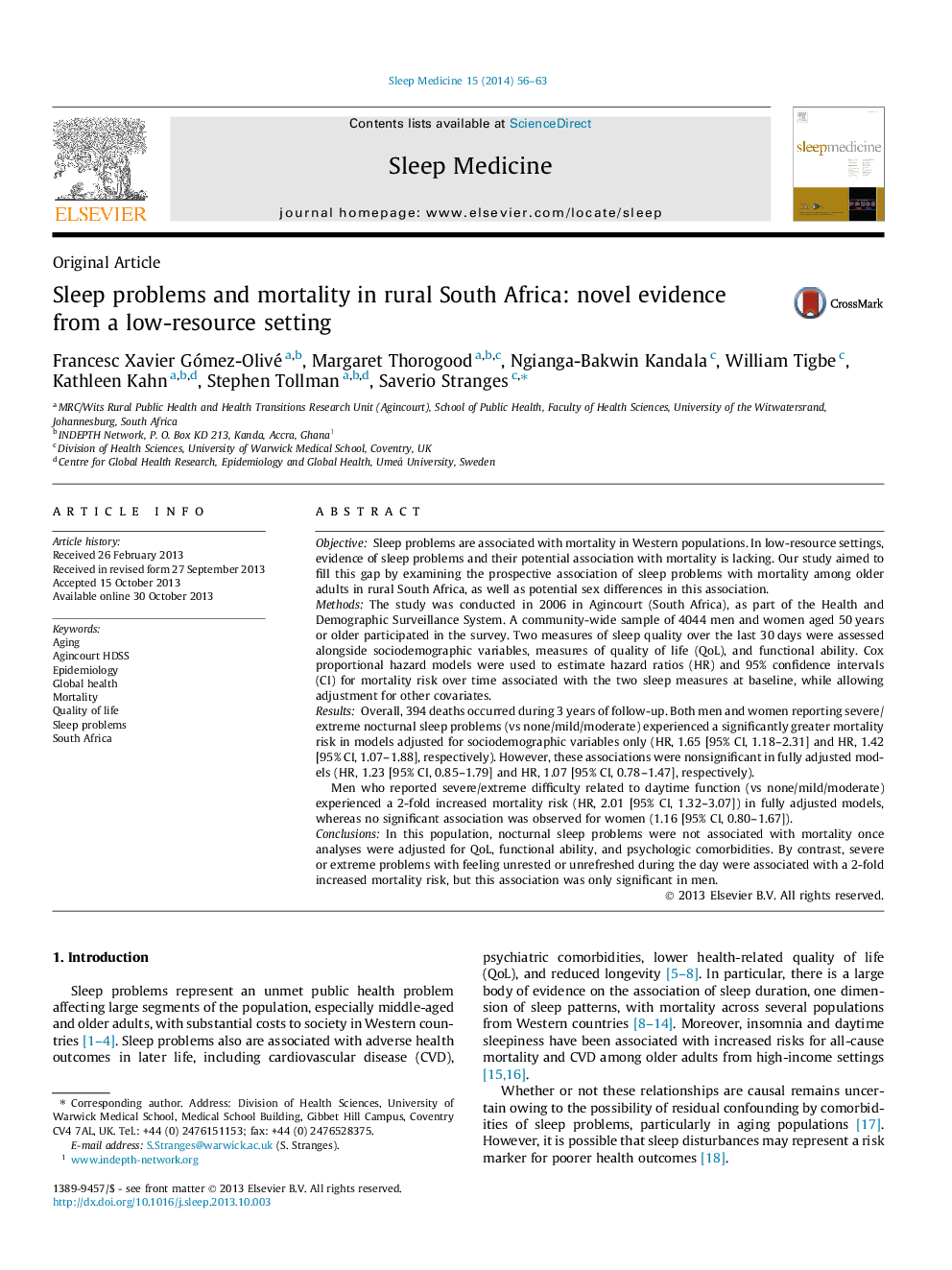| کد مقاله | کد نشریه | سال انتشار | مقاله انگلیسی | نسخه تمام متن |
|---|---|---|---|---|
| 6061313 | 1200261 | 2014 | 8 صفحه PDF | دانلود رایگان |
- Sleep problems might represent an unrecognized public health issue in low-resource settings.
- We examined the prospective association of sleep problems with mortality among older adults from rural South Africa.
- Severe difficulty related to daytime function was associated with a 2-fold increased mortality risk in men.
- No significant associations were observed in women.
ObjectiveSleep problems are associated with mortality in Western populations. In low-resource settings, evidence of sleep problems and their potential association with mortality is lacking. Our study aimed to fill this gap by examining the prospective association of sleep problems with mortality among older adults in rural South Africa, as well as potential sex differences in this association.MethodsThe study was conducted in 2006 in Agincourt (South Africa), as part of the Health and Demographic Surveillance System. A community-wide sample of 4044 men and women aged 50Â years or older participated in the survey. Two measures of sleep quality over the last 30Â days were assessed alongside sociodemographic variables, measures of quality of life (QoL), and functional ability. Cox proportional hazard models were used to estimate hazard ratios (HR) and 95% confidence intervals (CI) for mortality risk over time associated with the two sleep measures at baseline, while allowing adjustment for other covariates.ResultsOverall, 394 deaths occurred during 3Â years of follow-up. Both men and women reporting severe/extreme nocturnal sleep problems (vs none/mild/moderate) experienced a significantly greater mortality risk in models adjusted for sociodemographic variables only (HR, 1.65 [95% CI, 1.18-2.31] and HR, 1.42 [95% CI, 1.07-1.88], respectively). However, these associations were nonsignificant in fully adjusted models (HR, 1.23 [95% CI, 0.85-1.79] and HR, 1.07 [95% CI, 0.78-1.47], respectively).Men who reported severe/extreme difficulty related to daytime function (vs none/mild/moderate) experienced a 2-fold increased mortality risk (HR, 2.01 [95% CI, 1.32-3.07]) in fully adjusted models, whereas no significant association was observed for women (1.16 [95% CI, 0.80-1.67]).ConclusionsIn this population, nocturnal sleep problems were not associated with mortality once analyses were adjusted for QoL, functional ability, and psychologic comorbidities. By contrast, severe or extreme problems with feeling unrested or unrefreshed during the day were associated with a 2-fold increased mortality risk, but this association was only significant in men.
Journal: Sleep Medicine - Volume 15, Issue 1, January 2014, Pages 56-63
